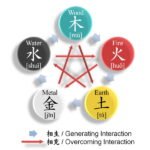Samsung Electronics’ chip plants (Courtesy of Samsung Electronics)
Samsung Electronics Co. reported a weaker-than-expected operating profit in its chip business in the third quarter but expects a rise in sales of its high-end AI chips, like high-bandwidth memory (HBM) chips, in the next quarter.
South Korea’s chip giant on Thursday announced that its Device Solutions (DS) division, which oversees its chip business, posted an operating profit of 3.86 trillion won ($2.8 billion) in the July-September period, nearly halved from the previous quarter’s 6.45 trillion won.
Compared to a year earlier, it returned to the black.
The final figure for the DS profit came below analysts’ earlier projections of about 4.4 trillion won worth of operating profit for the quarter.
The company blamed the disappointing profit on bigger-than-expected one-off expenses of about 1.5 trillion won, including employee performance bonuses, and ballooned losses in its foundry and system chip businesses estimated at more than 1.5 trillion won, respectively.
Taking account of all these factors, the company’s memory chip business fared better than expected in the quarter, the company explained, estimating its memory business profit at around 7 trillion won.
Its memory business posted 22.27 trillion won in sales in the quarter, more than doubled from a year ago thanks to a rise in sales of high-end chips for artificial intelligence devices and servers, such as HBMs, double data rate 5 (DDR5) and solid-state drive (SSD) for servers, the company said.
(Courtesy of Samsung Electronics)
The DS division reported 29.27 trillion won in quarterly sales.
Samsung Electronics shares jumped 3.1% to 60,900 won on Wednesday morning after seesawing earlier.
NEXT EARNINGS HINGE ON HBM SHIPMENTS
Samsung Electronics’ chip business lagged behind its smaller cross-town chip rival SK Hynix Inc., which reported an all-time high of 7.03 trillion won on in operating profit on a consolidated basis in the same quarter.
The key to Samsung’s earnings improvement is mass shipments of its advanced HBM3E chips in the fourth quarter.
“It is highly likely that the world’s No. 1 graphics processing unit (GPU) producer, Nvidia, would consider purchasing Samsung’s HBM3E eight-layer chips in the fourth quarter to prepare next year, which should be different from this year when the GPU developer handled all market demand only with SK Hynix chips,” said Song Myung-seob, an analyst at iM Securities Co.
Samsung also hinted that the sale of its high-end HBM3E chips to Nvidia would start soon. Earlier this month, the company said the sale of its high-end HBM3E chips to a major customer had been delayed without elaborating on the issue.
“The total sales of HBM chips in the third quarter jumped more than 70% from the previous quarter,” Kim Jae-joon, vice president of Samsung Electronics, said during an earnings conference call earlier today. “HBM3E sales accounted for the low and mid-10% range in the third quarter but they are expected to rise to about 50% in the fourth quarter.”
The company said it has seen significant progress in its HBM chip quality test with a major customer, Nvidia, raising expectations for a rise in its HBM chip sales in the fourth quarter.
Samsung Electronics also plans to expand sales of its HBM3E eight and 12-layer chips to multiple customers, while upgrading its HBM3E chips to meet the standards of its major customer’s next-generation GPU, said Kim.
“We are in talks with the customer over a schedule to mass-produce the more advanced product (HBM3E chips) in the first half of next year,” said Kim.
Samsung Electronics is developing the sixth-generation HBM chips, HBM4, to mass-produce them in the latter half of next year.
It also hinted at possible collaboration with its bigger foundry rival Taiwan Semiconductor Manufacturing Company Ltd. (TSMC) to meet its multiple HBM customers’ different demands.
Last month, SK Hynix said it had started mass production of HBM3E 12-layer chips, more advanced fifth-generation HBM chips, under a plan to supply them to Nvidia and other customers starting in the fourth quarter.
AGGRESSIVE R&D INVESTMENT TO REGAIN CHIP LEADERSHIP
To regain chip leadership, Samsung Electronics plans to double its semiconductor research and development center, which has been rumored to go through restructuring.
“We will prepare the future with the largest-ever R&D investment,” the company said.
In the first quarter of this year, the company invested 7.82 trillion won in R&D, a record high for the quarter, followed by a quarterly high of 8.05 trillion won in the second quarter and a new record high of 8.87 trillion won in the third quarter.
Samsung Electronics spent 12.4 trillion won in capital expenditure in the third quarter, about 300 billion won more than the prior quarter.
Of the total spending, 10.7 trillion won was injected in the DS division, according to the company.
Samsung Electronics is expected to spend a total of 56.70 trillion won in capex in 2024, 3.60 trillion won higher than 2023.
This includes a 47.90 trillion won investment in the DS division, slightly lower than last year as the company plans to slash spending on the foundry business after taking account of the current market situation, the company said.
AI SMARTPHONES AID EARNINGS
(Courtesy of Samsung Electronics)
Samsung Electronics said its third-quarter operating profit on a consolidated basis surged nearly four-fold on-year to 9.2 trillion won, slightly higher than its preliminary guidance of 9.1 trillion won.
Sales hit a quarterly record high of 79.1 trillion won, breaking the previous quarterly high of 77.8 trillion won marked in the first quarter of 2022. Net profit jumped 72.8% to 10.1 trillion won.
Sales of its flagship smartphones powered by AI technology and wearable devices backed the company’s overall earnings, the company said.
The Mobile eXperience (MX) division in charge of smartphone, tablet and wearable devices posted an operating profit of 2.82 trillion won in the third quarter, accounting for nearly 84% of its Device eXperience (DX) profit.
The result was 0.6% higher than the previous quarter but down 0.5% from a year ago.
By Jeong-Soo Hwang
hjs@hankyung.com
Sookyung Seo edited this article.














